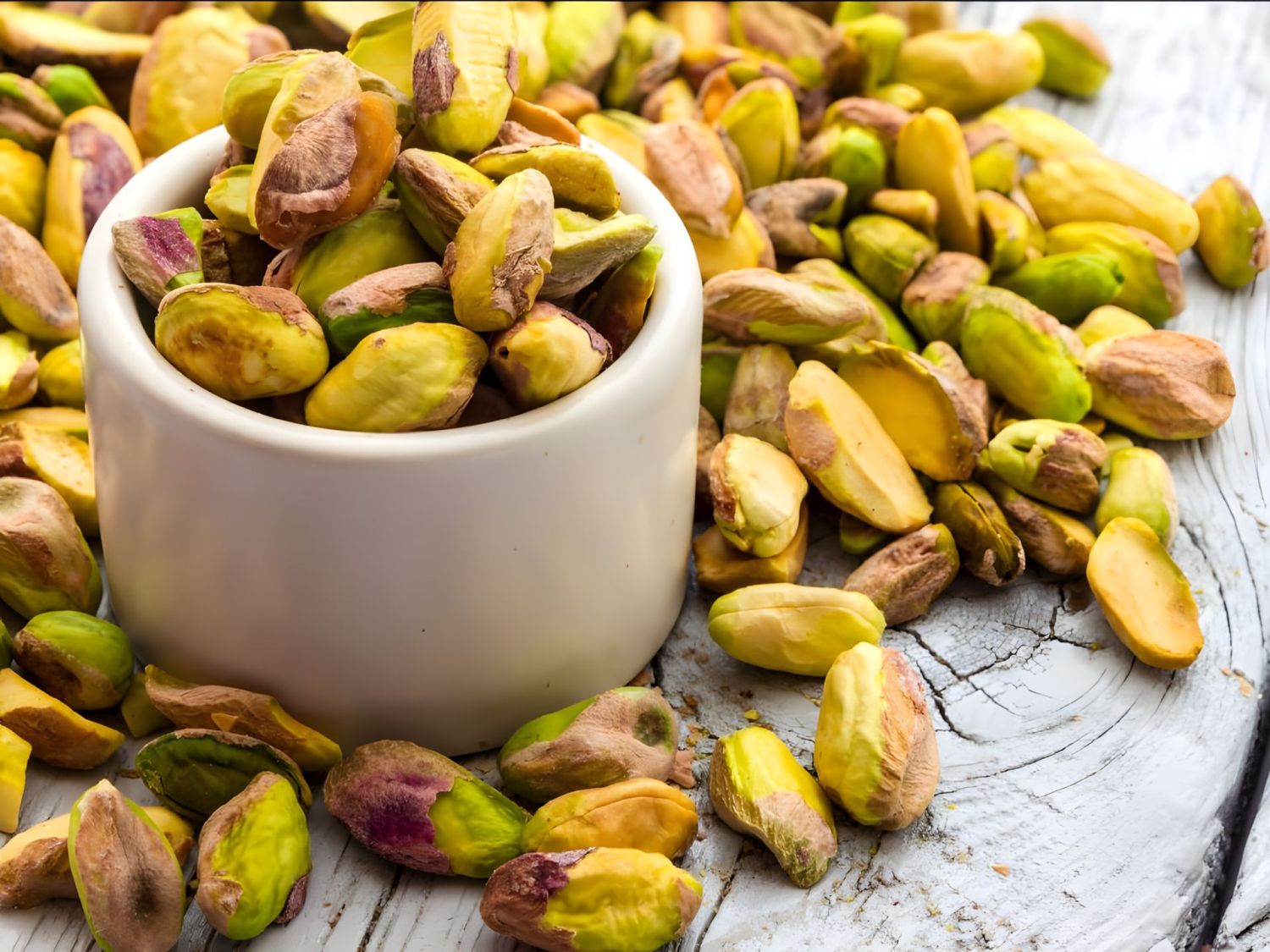The Greek pistachio Pistàkion is a fruit tree belonging to the family of the Anacardiaceae and the genre of Pistacia. It is a plant native to the Mediterranean basin. The first cultivations date back to Persia, Syria and India, where the fruit was called in different ways:pistakia,bistachion e pistakion.
We first find the word 'pistachio' in the Old Testament. Several studies have attributed the etymology of the word to the Arabic language, the word transliterated becomes fristaq to indicate the fruit and frastuq to indicate the plant. The two respective terms are still preserved in the Sicilian dialect (frastuca e frastucara).
The pistachio tree, which reaches a height of about 11-12 metres, is a long-lived plant, in fact some trees live about 200 years. The fruit, on the other hand, is a drupe with an oval endocarp and a thin, hard shell containing the seed, called a pistachio. It has a bright green colour under a purplish skin.
From its origins, we understand that the pistachio arrived in Sicily thanks to the Arabs. The pistachio plant found on the slopes of Mount Etna the ideal environmental conditions to grow.

The most famous place in Sicily where pistachio 'conquered' the land is Bronte in the province of Catania. The soil naturally fertilised by the volcano's ash favours its production.
Over the past year, the town of Raffadali, in the province of Agrigento, has also obtained PDO certification. After years spent by farmers in the valorisation of this plant, they have obtained this important recognition.
Pistachios from Bronte, now for years renamed 'the pistachio city"They are easily recognisable. They have a purple hue on the outside and a distinctive emerald green colour on the inside, so much so that the seeds began to be called "the green gold of Sicily". It is easy to recognise them from those cultivated in the rest of the world as they differ in their sweetish taste as well as in their appearance.
Around the pistachio, some Sicilian communities, and in particular that of Bronte, have developed their own traditions and wealth. Thanks to the hard work of farmers who, from generation to generation, have handed down the care of pistachio groves, pistachio is now part of Sicilian culture.
There are those who cultivate them, those who trade them, and those who transform them into sweets, creams and various toppings. But the peculiarity of the pistachio is that the tree has a biennial production and during the rest year farmers remove the buds that have sprouted on the branches. In this way the plant can rejuvenate and be richer in fruit the following season.
Awaited for two years, between the end of August and the beginning of September, the harvest (strictly by hand) is the decisive moment. The Sicilian villages involved empty, everyone in the pistachio groves works: women, old people and children.

The price of pistachios is still high in the market today. It ranges between 30 and 50 euros per kilo at wholesale, and up to 100 euros at retail. This explains the reason for the name 'green gold of Sicily'. In a year of good production, between 4 and 4.5 million pistachios are harvested. Almost 4 thousand hectares of land are occupied by pistachio groves.
Finally, we can give an overview of Italian and world pistachio production. Italy went from a production of 2,400 tonnes in 2005 to 2,850 tonnes in 2012, making it the seventh largest producer in the world. In first place is Iran, followed by Turkey, Syria, Greece and Tunisia.
Want to know more about Sicilian pistachios? Learn more with our other blog articles.
